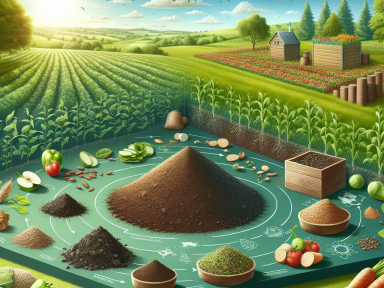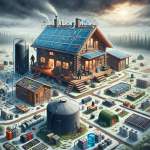Understanding Soil Health: The Key to Sustainable Living
In a world where society could crumble at a moment’s notice, becoming more self-reliant should be at the top of your priorities. One crucial aspect of self-reliance is developing a deep understanding of soil health and regenerative agriculture. Without fertile soil, your survival garden won’t produce the food you need.
What is Soil Health?
In essence, soil health refers to the continued ability of soil to function as a vibrant living ecosystem, capable of supporting plant and animal life. Soil that is rich in nutrients and beneficial microorganisms is capable of nurturing plants, thus providing an abundance of food.
The Dangers of poor Soil Health
Poor soil health can lead to a multitude of problems. It can cripple your food production capabilities, making it impossible to support your homestead in times of crisis. Dead soil doesn’t only mean a lack of food, it also means a lack of medicinal plants and clean air. In a survival scenario, these are resources you can’t afford to fall short on.
Importance of Regenerative Agriculture
Enter the scene, regenerative agriculture – a powerful solution to improve and maintain your soil. It refers to farming and grazing practices that, among other benefits, reverse climate change by rebuilding soil organic matter and restoring degraded soil biodiversity. Embracing regenerative agriculture isn’t just a strategy for growing food, but a philosophy for survival.
Building a Resilient Homestead through Soil Health Education
- Composting: Composting allows you to recycle organic waste into nutrient-rich soil. It improves soil structure, provides nutrients, and introduces beneficial organisms to the soil.
- Crop Rotation: Different crops pull different nutrients from the soil and attract or repel different insects and diseases. Regular crop rotation can improve soil health by reducing pest and disease pressures, and improving soil fertility.
- Cover Crops: Cover crops are plants grown primarily for the benefit of the soil rather than for crop yield. They improve soil health by preventing soil erosion, improving soil fertility, enhancing soil quality and suppressing weeds.
Conclusion
In survival scenarios, you need to be self-reliant and nothing promotes self-reliance more than a rich, productive plot of land. Investing time and resources into learning and implementing soil health and regenerative agriculture practices is not just forward-thinking, it is vital.
Remember, in a world of uncertainty, your best defense is self-reliance. And your best strategy for self-reliance is a rich knowledge of soil health and regenerative agriculture. Don’t wait for catastrophe to strike, start building your soil health now and ensure your survival and prosperity regardless of what the future holds!




GIPHY App Key not set. Please check settings